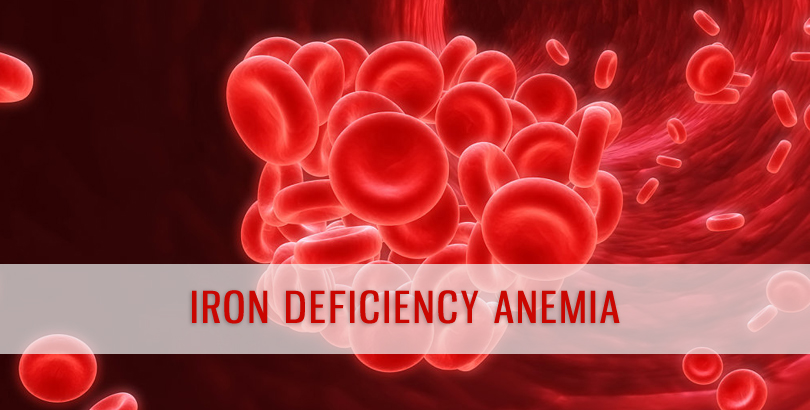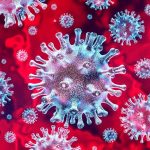Anemia is defined as the reduction in mass of red blood cells. Red blood cells are primarily responsible for carrying oxygen and delivering it to all organs. Hence anemia leads to impaired oxygenation.
Anemias can be classified based on their cause as anemia due to nutritional deficiency and anemia not due to nutritional deficiency. In this article, we shall deal with the nutritional anemias. The commonest nutritional deficiency anemias are Iron deficiency anemia and megaloblastic anemia, (most commonly due to deficiency of Vitamin B12 and Folic acid).
Anemia is a complex of signs and symptoms which need further evaluation. We shall cover Iron Deficiency Anemia in this article.
Iron Deficiency Anemia:
Iron is the chief component of hemoglobin, the oxygen binding component of red cells.
Iron deficiency is the commonest nutritional deficiency in India,especially amongst women of child bearing age group.
Causes of Iron Deficiency:
- Diet deficient in iron, due to poverty related malnourishment or as a result of fad diets.
- Iron deficiency as a result of blood loss such as menorrhagia, intestinal helminthiasis, peptic ulcer disease, gastrointestinal cancers or gastric bleed due to any other cause.
- Mismatched demand and supply, such as in multiparity, in breastfeeding mothers, in chronic diseases or convalescence, during growth etc.
Signs And Symptoms:
Because a low red blood cell count decreases oxygen delivery to every tissue in the body, anemia can cause a variety of signs and symptoms. It can also worsen the symptoms of almost any other underlying medical condition.
- Mild anemia may not have any symptoms.
- As anemia progesses, the earliest symptoms are generalized weakness, easy fatigability, lethargy etc.
- In severe anemia, due to impaired oxgen delivery, there is breathlessness even on slight exertion.
- Anemia in presence of pre-existing heart disease leads to left heart failure, angina, early progression of disease.
- Anemia along with general malnutrition can cause generalized swelling.
- Pica or craving to eat inedible things like chalk or dirt is seen in severe anemia
- Esophagal webbing with difficulty in swallowing is seen.
- Brittle hair, nail and skin changes are seen
- With severe anemia,menstrual abnormalities such as scanty bleeding or absent menses can be seen.
Diagnosis Of Anemia:
- Physical examination and medical history also play a crucial role in diagnosing causes of anemia. Some of the important features in medical history cover questions about family history, previous personal history of anemia or other chronic conditions, medications, color of stool and urine, bleeding problems, and occupation and social habits (such as alcohol intake).
- While performing a complete physical examination, general appearance (signs of fatigue, paleness), jaundice (yellow skin and eyes), paleness of the nail beds, enlarged spleen (splenomegaly) or liver (hepatomegaly), heart sounds, and lymph nodes carry importance.
- Complete blood count (CBC): Determines the severity and type of anemia (microcytic anemia or small-sized red blood cells, normocytic anemia or normal-sized red blood cells, or macrocytic anemia or large-sized red blood cells) and is typically the first test ordered. Information about other blood cells (white cells and platelets) is also included in the CBC report.
- Stool Occult blood test: Tests for blood in the stool may detect bleeding from the stomach or the intestines (stool Guaiac test or stool occult blood test).
- Peripheral blood smear: Looks at the red blood cells under a microscope to determine the size, shape, number, and appearance as well as evaluate other cells in the blood.
- Iron, Transferrin and Ferritin level: Serum Iron studies may tell whether anemia may be related to iron deficiency or not.
- Folate: A vitamin needed to produce red blood cells, which is low in people with poor eating habits.
- Vitamin B12: A vitamin needed to produce red blood cells and low in people with poor eating habits or in pernicious anemia.
- Bilirubin: Useful to determine if the red blood cells are being destroyed within the body which may be a sign of hemolytic anemia.
- Lead level: Lead toxicity was formerly one of the more common causes of anemia in children.
- Hemoglobin electrophoresis: Sometimes used when a person has a family history of anemia; this test provides information on sickle cell anemia or thalassemia.
- Reticulocyte count: A measure of new red blood cells produced by the bone marrow.
- Liver function tests: A common test to determine how the liver is working, which may give a clue to other underlying disease causing anemia.
- Kidney function test: A test that is very routine and can help determine whether any kidney dysfunction exists. Kidney failure can result in erythropoietin (Epo) deficiency, leading to anemia.
- Bone marrow biopsy
Treatment:
- Dietary modification: In mild anemia which is asymptomatic, diet rich in iron such as spinach, beetroot, dates, figs, jaggery, ragi, eggs, meat etc are advised.
- Oral iron supplementation in mild to moderate anemia with mild symptoms is advised.
- Injectable iron: In severe anemia or with severe symptoms,intolerance to oral iron etc,injectable iron dextrose is advised.
- Packed cell transfusion: In blood loss, severe symptoms, shock or heart failure, packed red cell transfusion is advised.
- Treatment of primary cause such as helminths, peptic ulcer disease etc
- Erythropoetin injections in patients with kidney failure.



















